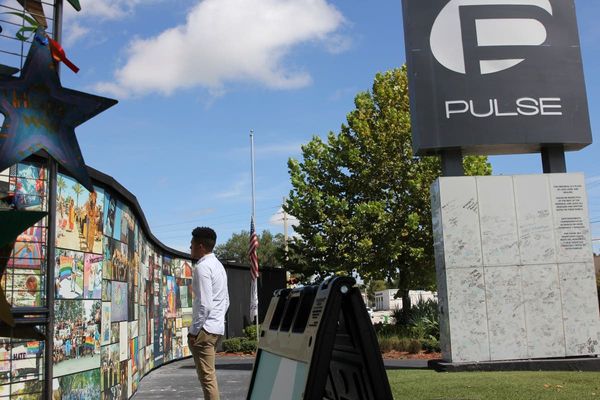
When King Charles enters Westminster Abbey for the coronation ceremony on Saturday, he will be preceded, among many other items of royal bling, by a short gold rod topped with a small cross, known as St Edward’s staff. Unlike the stone of destiny, the sword of mercy or the bracelets of sincerity and wisdom – all real items of regalia that will play symbolic roles in the ceremony – the staff has no role whatsoever. It is carried in at the start of the service, set on the altar, and then carried out again at the end.
In fact, no one has any idea what St Edward’s staff is meant to represent. When Charles II, restored to the throne in 1660 after the English Civil War, ordered his goldsmiths to remake the crown jewels that had been sold or melted down by parliamentarians, the inventory of items that had been lost included a staff of Saint Edward. And so one was made to replace it – an important symbol of something, even if no one could remember what.
To some, St Edward’s staff might serve as a useful metaphor for this weekend’s coronation as a whole – a baffling archaism, supposedly laden with symbolism but without any real contemporary meaning.
But while the ceremony may seem anachronistic or alien to a 21st-century audience, that is partly its point, say historians and constitutional experts. Coronations aren’t really about transforming a person into a king or queen. Their job is for show, to reinforce the symbolism of their reign – not for nothing is the central space of the coronation in Westminster Abbey called the theatre – and they have been doing it for a very long time indeed.

The most important thing to remember about the coronation ritual, says Anna Keay, a historian of the Civil War and an expert in regalia, is that it is “properly, mind-bogglingly ancient”. Lots of oldish-seeming royal pageantry is “really very recent” (she means a few hundred years old at most). The coronation rite, on the other hand, really does still follow the format used when King Edgar was crowned at Bath Abbey in 973AD, and many of the heavily symbolic items that are still used originate from that millennium-old ceremony.
That means that when William the Conquerer became the first of now 40 monarchs to be crowned at Westminster Abbey almost a century later, he was already following an old-fashioned ritual, and “by the time of, say, Henry VIII, it was incredibly ancient,” says Keay, who is director of the Landmark Trust. “The objects with which the king was being invested would have seemed very, very archaic even then.
“So whether you’re a [royal] flag-waver or you absolutely are not, it is going to be an incredible thing to see this happen again, just because the sheer antiquity of it is something to marvel at. It is really like a bit of the past suddenly appearing in a time machine in front of us.”
What is a coronation actually for?

That is not the same as asking what the point is of the monarchy – because even kings and queens, in the strictest terms, don’t need coronations at all. Placing a crown on Charles’s head or anointing him with oil won’t make him the king – legally and constitutionally he has been doing the job since the moment his mother died last September.
Edward VIII was never crowned. William IV didn’t want to be and had to be persuaded against his will. Even Edgar had been king of the English since 959, waiting 14 years to summon the religious leaders to crown him in Bath – perhaps to mark his newly “imperial” status as ruler of several Anglo-Saxon kingdoms, according to the historian Roy Strong. In modern times, meanwhile, no other modern European monarchy still has a coronation – their kings and queens simply get on with it.
Neither the anointing with oil, the most sacred religious part of the rite, nor the solemn coronation oath are really necessary, says Bob Morris of the Constitution Unit at University College London. “If you don’t swear the oath, nothing happens,” he says. “There are no penalties if you don’t swear it. In that sense it was, from the beginning, symbolic.”
Symbols, however, are very important to monarchs. Edgar’s anointing with oil was a self-conscious invocation of the Old Testament anointing of King Solomon by Zadok the priest, and aimed to cast him as the biblical king’s successor (Handel’s setting of that biblical passage, incidentally, has been part of the coronation service since 1727, but the very same text has been sung at every English or British coronation since before the Norman conquest).

Putting on a crown – a custom seen in diverse cultures from antiquity – has always been a useful way of asserting that it was you, not someone else, who was in charge in a period before these things were automatically long settled by primogeniture, notes Morris.
The customs that have accrued around the English and later British coronation, meanwhile, have brought their own symbolic resonances. The Stone of Scone, for instance, the ancient symbol of Scottish monarchy that was forcibly seized by English forces in 1296 and later incorporated into a coronation chair in Westminster Abbey, was a pretty effective symbol of English colonial power, just as, many centuries later, so were the vast jewels variously acquired in South Africa and India that were set into the crowns and sceptre.
The third King Charles wants to convey his own symbolism, of course, with Buckingham Palace declaring that his coronation would “recognise the spirit of our times”. In this case, that has meant an active role for representatives of other faiths, the inclusion of female bishops for the first time and the use of the Welsh, Scottish Gaelic and Irish languages.
But these are mostly tweaks. “An important point to understand is that monarchs themselves have only limited influence on the coronation ceremony,” says Philip Williamson, emeritus professor of history at Durham University. “The monarchy is not just a person but an institution, and is surrounded by other institutions: it exists within structures.”

Charles, says Williamson, “clearly regards the coronation as an occasion to show that the monarchy is ‘relevant’, by encouraging interdenominational and interfaith elements, even though these will be marginal to the essence of the service. But it is the symbolism that matters.”
The problem is that the symbolic relevance or otherwise of this ceremony will really be for others – his subjects – to judge. The invitation to swear allegiance via one’s TV sets for instance, presumably conceived as an attempt to signal Charles’s democratising instincts and common touch, might suggest insecurity rather than strength.

One might also question whether trumpeting that Queen Camilla will wear a “recycled” crown – it was used at a previous coronation – has quite the resonance the palace thinks it does, not least because it has been reset to include three of the “smaller” Cullinan diamonds (at 94, 63 and 18 carats, Queen Mary used to call them “the chips”).
Nevertheless, as Walter Bagehot noted in the mid nineteenth century, for a monarch, “To be invisible … is to be forgotten. To be a symbol, and an effective symbol, you must be vividly and often seen.” And so, cost of living crisis or not, the new King and Queen, laden with their jewel-encrusted crowns, will ride back to Buckingham Palace from the Abbey in a gold state coach. As symbols go, that one is fairly unambiguous.







